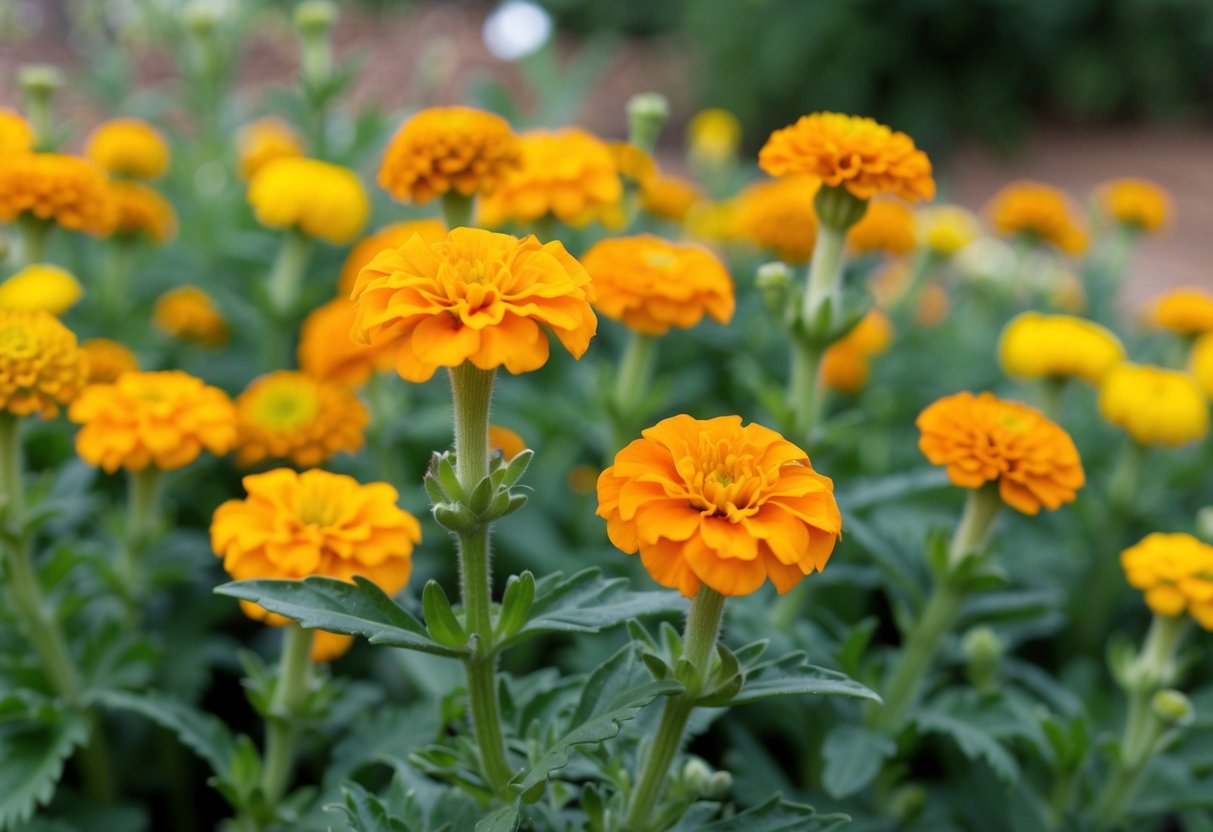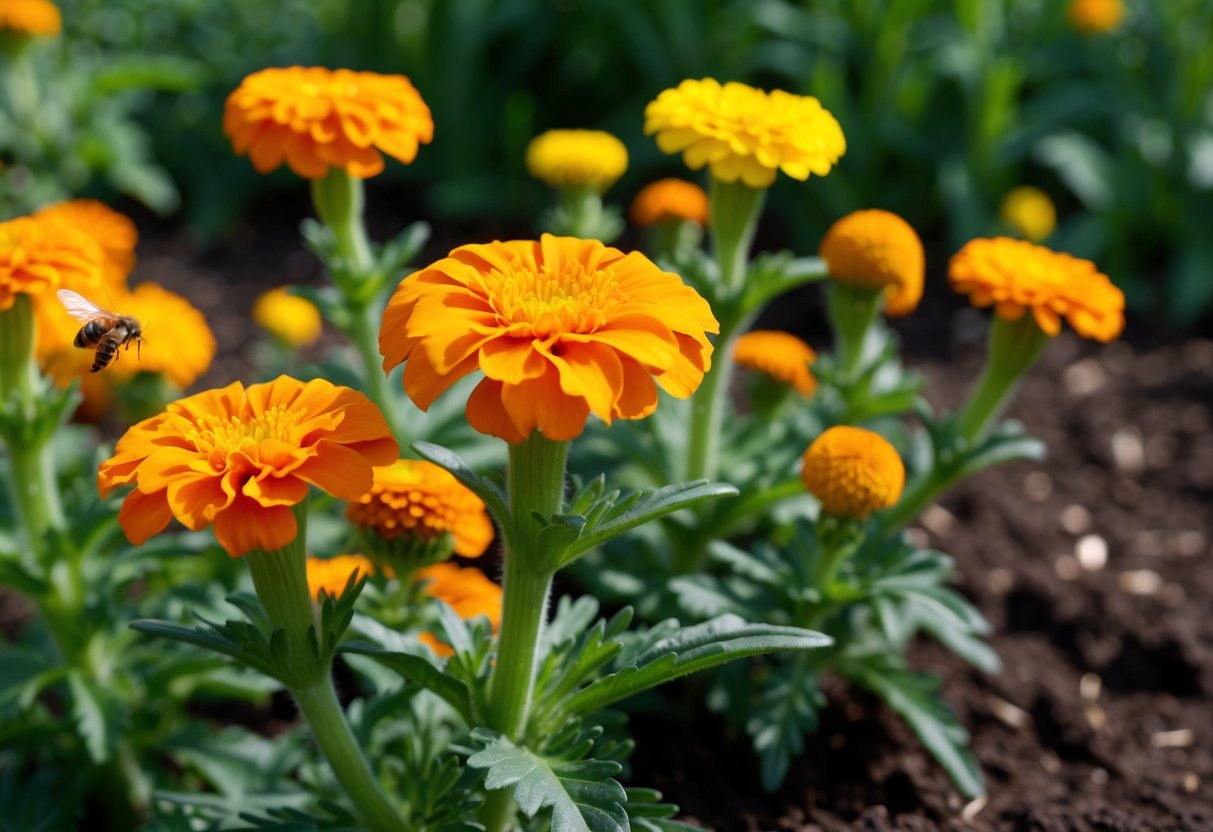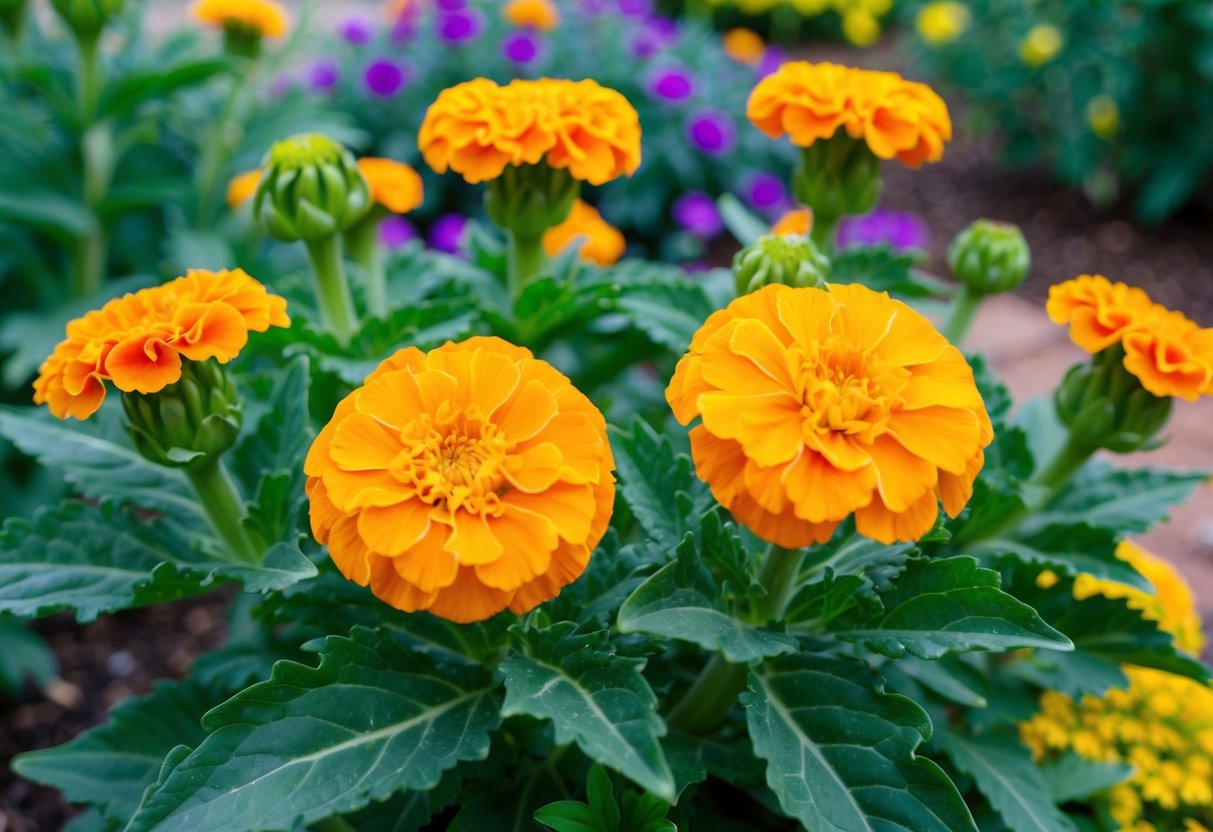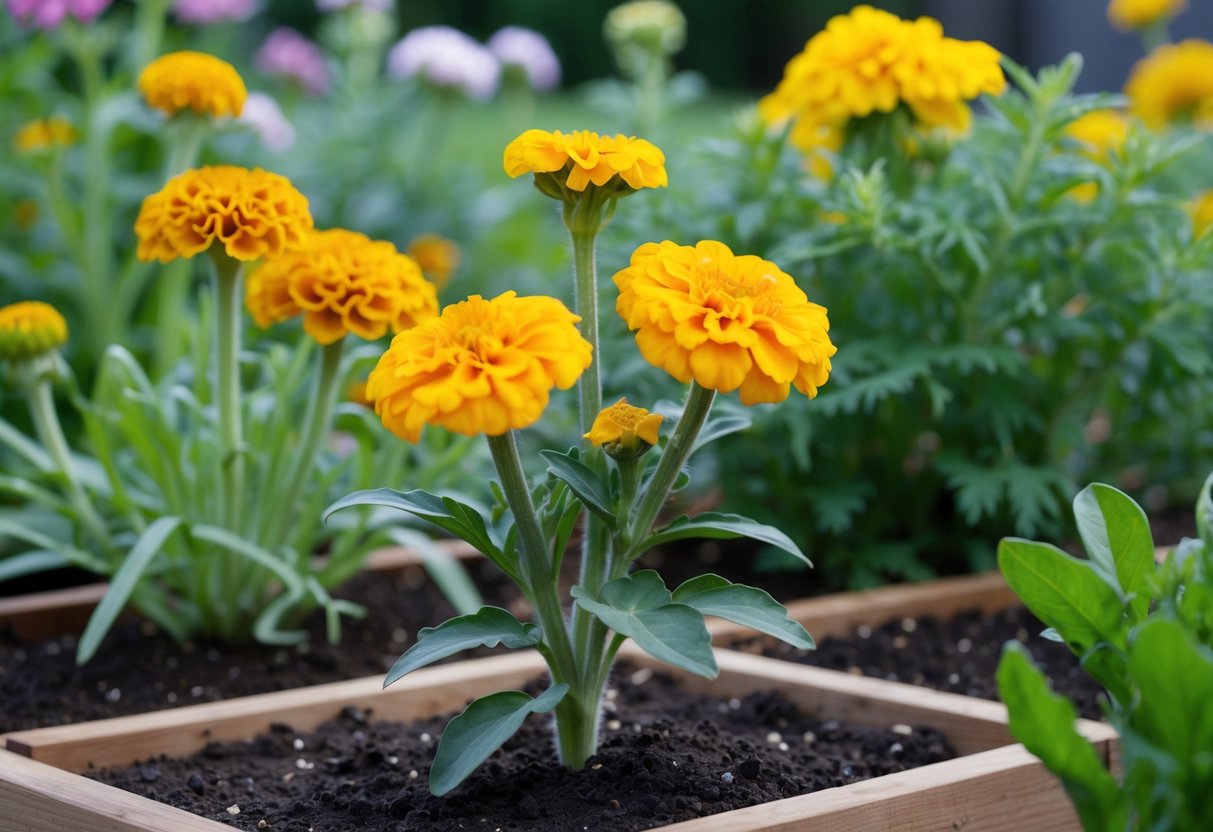What is the Lifespan of a Marigold Plant? Discover Its Growth Cycle
When you’re planning to plant marigolds, you might wonder about how long they’ll last in your garden. Marigolds typically have a lifespan of 6-8 weeks, depending on the variety and growing conditions. These vibrant flowers can add a splash of color, but it’s essential to know they are considered annuals, meaning they complete their life cycle in one growing season.

Marigolds are a popular choice for gardeners because of their bright colors and low maintenance. While they might not stick around for years, they’re perfect for adding seasonal beauty to your garden. To keep them looking fresh, try removing spent flowers, a practice known as deadheading. This encourages new blooms to form, keeping your garden lively.
If you want your marigolds to thrive, consider factors such as the specific type of marigold you choose and where you plant them. Whether you’re a seasoned gardener or just getting started, understanding these details can help you enjoy more blooms. Feel free to look up additional tips on how to care for these charming flowers to make the most of their time in your garden.
Understanding Marigolds

Marigolds are vibrant plants known for their golden blooms. They can be annuals or perennials depending on the species. Key varieties include the French and African marigolds. These plants have distinct characteristics, from their height to the type of flowers they produce.
Species and Varieties
There are several species of marigolds, each with its own charm. Tagetes erecta, or African marigold, is a tall variety reaching up to three feet. Its large flowers are often yellow or orange. On the other hand, Tagetes patula, known as French marigold, grows about a foot tall and features smaller blooms.
Tagetes tenuifolia, or signet marigold, has delicate, lacy foliage and small, single-layer flowers. It’s especially loved for its citrusy scent. While most marigolds are of the Tagetes genus, calendula (often called pot marigold) is a separate genus and isn’t a true marigold. Each marigold variety has its own flowering period, with some blooming longer, offering color throughout the growing season.
Plant Characteristics
Marigolds are valued for their vibrant flowers and easy growth habits. They thrive in full sunlight and prefer well-drained soil. The plants are annuals, meaning they complete their life cycle in one year. This includes germinating, flowering, and seeding before the first frost hits.
African marigolds are taller, making them great for garden borders. Their large blooms are visually striking. French marigolds are smaller and bushier, ideal for containers or garden edges. Signet marigolds have a unique foliage pattern and produce small blooms that are both decorative and edible. This mix of characteristics makes marigolds popular among gardeners looking for diverse options in their landscapes.
Planting and Cultivation

When growing marigolds, you need to consider the ideal conditions and proper growth and care techniques. These details will help your marigolds thrive, giving your garden vibrant colors and healthy plants.
Ideal Conditions
Marigolds thrive best in full sun. Aim for 6 to 8 hours of sunlight daily. Use well-draining soil to prevent waterlogging, which marigolds dislike. The optimal soil pH ranges from 6.0 to 7.0 for healthy growth.
Marigolds generally aren’t fussy about soil type but prefer soil that isn’t too rich in organic matter. If necessary, adjust the temperature to stay warm, as marigolds flourish in warmer climates. Ensure good air circulation to reduce the risk of disease and keep the plants healthy. Proper spacing during planting is also important; for instance, space French and signet marigolds 8 to 10 inches apart.
Growth and Care
Marigolds need regular watering, especially during dry spells. Make sure to keep the soil moist, but avoid overwatering, which can lead to root rot. If you’re planting seeds, sow them directly in the garden after the frost danger has passed. You can also plant young transplants if you prefer a quicker start.
Regular pruning and deadheading are crucial to encourage new blooms. When it comes to fertilizer, marigolds don’t require much. A light feeding once in a while is enough. Instead of chemical fertilizers, consider adding a light layer of organic matter to boost growth gently.
Health and Maintenance

Marigolds are pretty easy to care for. They need some attention to stay healthy, especially when it comes to pests and diseases. Here are some ways to keep your marigolds looking great.
Pest and Disease Management
Marigolds can attract unwanted pests like aphids, spider mites, and whiteflies. To manage these, you can introduce beneficial insects like ladybugs to your garden. They naturally control these pests and help your marigolds stay healthy.
Yellowing leaves can be a sign of trouble. It might mean there is too much water, leading to issues like root rot. Make sure the soil drains well and avoid overwatering.
Diseases like powdery mildew can affect marigolds. This fungal disease shows up as white powder on the leaves. You can prevent it by planting marigolds in a spot with good air circulation and avoiding overhead watering.
Keeping Marigolds Thriving
To maintain marigolds, place them in full sun. These plants thrive with 6-8 hours of sunlight each day. If you’re potting marigolds, use a soil-based mix and water thoroughly.
Repotting can be necessary if marigolds outgrow their containers. Choose a pot that allows good drainage. Ensuring the soil is not too rich in organic matter can result in more vibrant blooming.
Marigolds are low-maintenance but can still benefit from occasional deadheading. This means removing wilted or dead flowers to encourage new growth.
Reproduction and Lifespan

Marigolds are popular for their bright blooms and quick growth. Understanding their lifecycle and how to care for them can help you enjoy their beauty for longer periods.
Lifecycle Stages
Marigolds are often grown as annual flowers, meaning they complete their life cycle in one growing season. From marigold seeds to blooming plants, this cycle follows specific stages. First, seeds undergo germination, sprouting roots and stems. Once the seedlings grow, leaves emerge, and the plant matures.
Most marigolds are annual, but some species, like the perennial marigold Tagetes lucida, can live longer. As marigolds grow, they produce vibrant flowers. Once they bloom, these flowers can self-seed, dropping seeds into the soil to grow new plants the following season, especially if they aren’t deadheaded.
Extending Bloom Time
To keep your marigolds blooming longer, there are some tricks you can try. Starting seeds indoors before the last frost date can give marigolds a head start. Once outside, regular deadheading helps prolong flower production.
Mulching around the plants provides protection against cooler temperatures as the growing season ends. Although marigolds are frost-tender, this protection can sometimes extend their lifespan slightly. Consistent care and attention to their needs can result in a longer display of flowers in your garden.
Utilization in Gardens and Landscapes

Marigolds are versatile plants known for their vibrant colors and practical benefits. They are perfect for adding beauty and functionality to your garden or landscape with uses in design and as companion plants.
Design and Aesthetic Uses
Incorporating marigolds into your garden can enhance its visual appeal. You can use garden marigolds for their bright and sunny colors, making them excellent choices for borders or edging plants. Their range of hues can be a lively addition to rock gardens or paths.
Pot marigolds are ideal for container gardening, allowing you flexibility in placement, whether on patios or in smaller spaces. You’ll often find them available at local garden centers, ready to brighten any spot.
Their versatility in design helps you create stunning focal points. Planting marigolds in mass adds a bold splash of color, providing eye-catching contrast against greenery.
Companion Planting Benefits
Marigolds also make great companion plants in vegetable gardens. Their scent can repel unwanted pests like aphids and nematodes. This protects nearby vegetables from infestations and makes marigold care easier.
Choosing marigolds for your garden encourages pollinators such as bees and butterflies to visit, ensuring your plants thrive. Additionally, Mexican marigolds can be particularly effective at deterring insects with their strong odor and natural compounds.
Plant them among tomatoes, peppers, or beans to boost growth and yield. This strategic planting not only nurtures your vegetables but also contributes to a healthy, balanced ecosystem in your garden.







